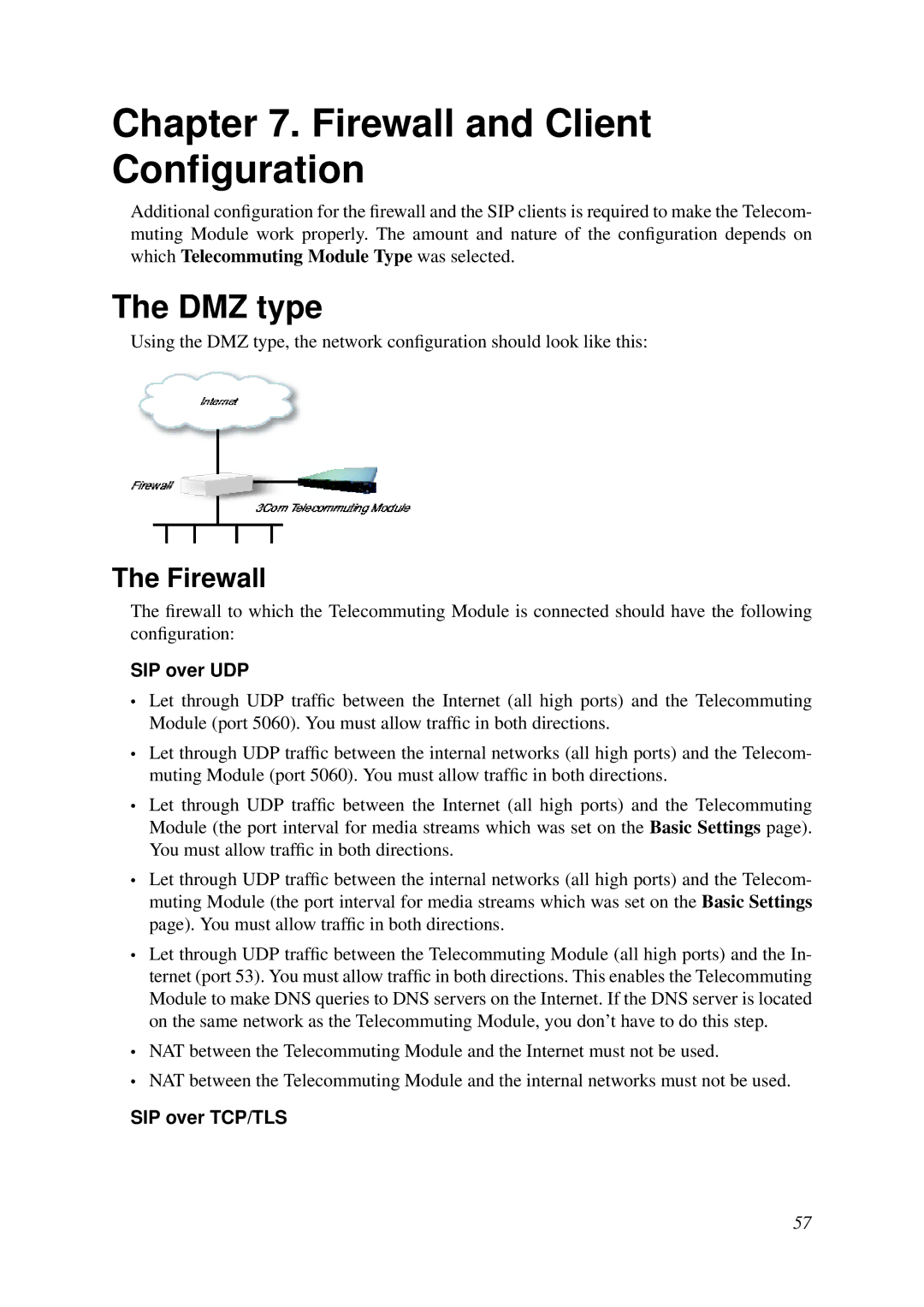
Chapter 7. Firewall and Client Configuration
Additional configuration for the firewall and the SIP clients is required to make the Telecom- muting Module work properly. The amount and nature of the configuration depends on which Telecommuting Module Type was selected.
The DMZ type
Using the DMZ type, the network configuration should look like this:
The Firewall
The firewall to which the Telecommuting Module is connected should have the following configuration:
SIP over UDP
•Let through UDP traffic between the Internet (all high ports) and the Telecommuting Module (port 5060). You must allow traffic in both directions.
•Let through UDP traffic between the internal networks (all high ports) and the Telecom- muting Module (port 5060). You must allow traffic in both directions.
•Let through UDP traffic between the Internet (all high ports) and the Telecommuting Module (the port interval for media streams which was set on the Basic Settings page). You must allow traffic in both directions.
•Let through UDP traffic between the internal networks (all high ports) and the Telecom- muting Module (the port interval for media streams which was set on the Basic Settings page). You must allow traffic in both directions.
•Let through UDP traffic between the Telecommuting Module (all high ports) and the In- ternet (port 53). You must allow traffic in both directions. This enables the Telecommuting Module to make DNS queries to DNS servers on the Internet. If the DNS server is located on the same network as the Telecommuting Module, you don’t have to do this step.
•NAT between the Telecommuting Module and the Internet must not be used.
•NAT between the Telecommuting Module and the internal networks must not be used.
SIP over TCP/TLS
57
